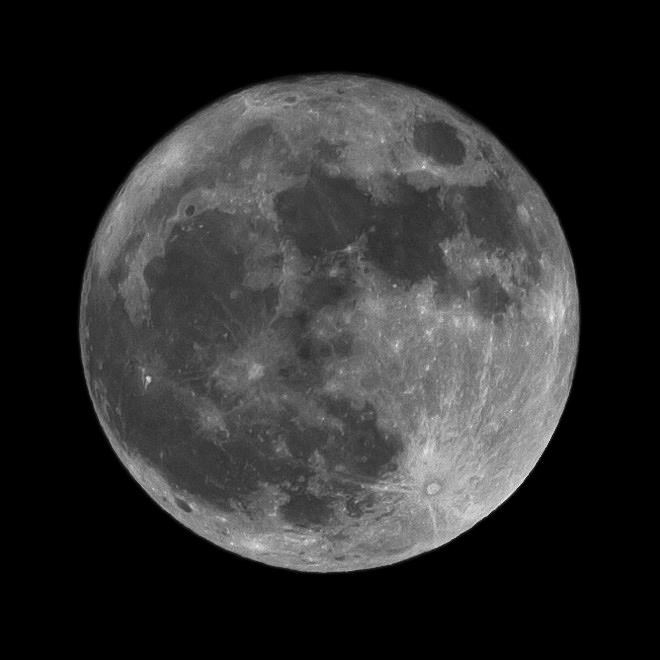The current drought for planetary observing continues with everything but Mars either too close to the sun or the horizon. So, this month’s topic will be some esoteric facts about our moon.
• Last quarter April 4 at 03:02
• New moon April 11 at 19:30
• Close approach to Mars April 16 at 23:00
• First quarter April 19 at 23:59
• Full moon April 26 at 20:31, perigee early April 27, large tides
The current prevailing theory of the moon’s origin is that early Earth was struck by a Mars-sized body about half the diameter of the proto-Earth and about one-tenth its mass. A glancing blow would likely leave a debris field in orbit around Earth, which would have accreted to form what is now our satellite. This hypothesis would help explain the 23-1/2 degree tilt of Earth’s axis and our resultant seasons.
The ratio of oxygen isotopes in lunar samples is essentially identical to terrestrial rocks, which suggests the moon formed from Earth’s post-impact debris field.
Although the moon is now about 385,000 km (240,000 miles) from Earth, it formed much closer to Earth and slowly moved farther away. This was due to the tidal interactions between Earth and moon, which cause both to bulge towards the other.
While the ocean clearly rises and falls depending on the moon’s location, Earth itself does too, although to a lesser extent. Earth’s rotation tends to carry this bulge with it, with the result that the bulge, being slightly closer to the moon, adds a slight forward component to the attraction of Earth’s gravity. This slightly pulls the moon in the same direction as Earth’s rotation, slowly pulling the moon into a higher orbit while at the same time slightly slowing down the Earth’s rotation – a transfer of angular momentum from Earth to moon.
The moon’s orbital radius is increasing by about 38 mm (about an inch and a half) per year, meaning that when Neil and Buzz walked around up there the moon was about their average height closer to the Earth.
The same thing happened to the moon: whatever rotation it had was slowed by the force of Earth’s gravity on its tidal bulge, so that it is now tidally locked to Earth and its rotational period equals its orbital period.
Eventually, Earth’s rotation will slow until it, too, is locked to the moon’s orbital period. At this point, Earth will still be rotating faster than it orbits the sun and the smaller tidal bulge due to the sun’s gravity will continue to slow Earth’s rotation.
Earth’s tidal bulge will then begin to lag the moon’s orbital motion, the pull will be acting in reverse and the moon will slowly start to spiral back towards the Earth.
The moon will move ever closer until it reaches 18,470 km (11,470 miles) above the Earth, a point known as the Roche limit. This is the radius inside which the tidal forces pulling objects apart exceed their mutual attraction due to gravity.
Fragmented moon
Ultimately, our moon will begin to fragment and we’ll have a ring like Saturn.
This forecast of Earth – moon orbital interactions was a couple of lectures in a fascinating astrophysics course I took about 50 years ago. I can’t remember whether this would occur before or after the sun turns into a red giant and fries us in about five billion years from now but I think I’m safe in saying that at my age I don’t have to worry about it.
The Royal Astronomical Society of Canada has a number of observing programs, among them “Explore the Moon,” one for telescope use and another for binoculars. Either is highly recommended.
At 7 p.m. on April 10, 2021, the Sunshine Coast branch will hold its monthly Zoom meeting online to present Dr. Janok P. Bhattacharya, Susan Cunningham Research Chair in Geology at the School of Earth, Environment and Society (SEES), McMaster University, Hamilton, ON, whose topic will be The Origin of Life and Martian Possibilities. Details are available online.



